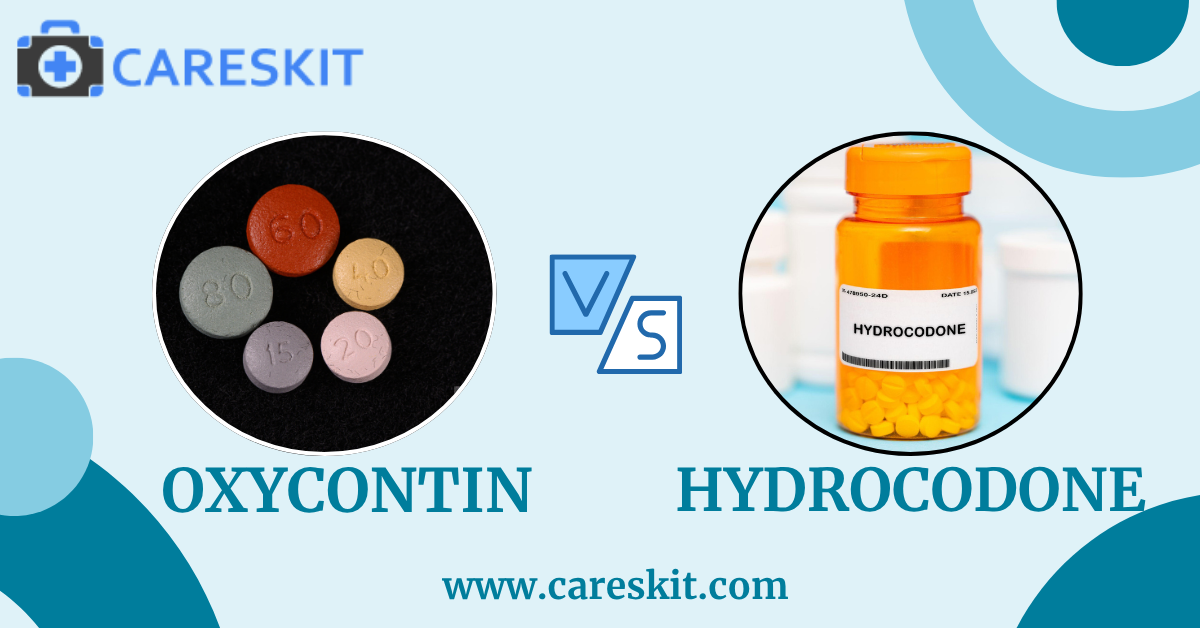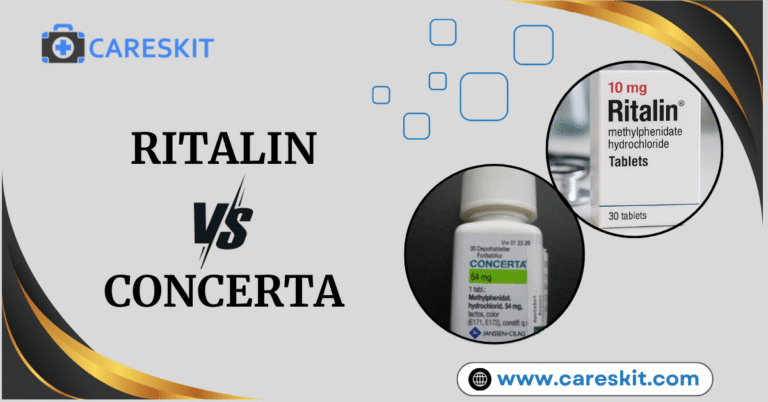Oxycontin vs Hydrocodone: Which Is Better for Pain Relief?
When it comes to managing moderate pain to severe pain, both OxyContin and Hydrocodone are two of the most powerful opioid analgesics. Although both medications come under the opioid drug class, they function to treat pain by interacting with receptors in the brain and nervous system. OxyContin is mainly considered more potent and is associated with high side effects, while Hydrocodone is more likely to cause constipation. Both medications have a high potential for abuse and addiction. In this article, OxyContin vs Hydrocodone will be compared on some key factors.
Including medical purposes, dosage, side effects, and abuse potential. These are discussed here to help you obtain the proper medication. You can also explore: What are OxyContin vs Hydrocodone dosage, Can you take OxyContin and Hydrocodone together, and Are OxyContin and Hydrocodone the same thing? This guide can assist you in making a well-informed decision for selecting which is better, OxyContin or Hydrocodone, for you.
After that, if you have any other questions, please consult your healthcare professional for further guidance on improved treatment.
Understanding OxyContin and Hydrocodone
OxyContin and Hydrocodone are both potent opioid analgesics prescribed to treat moderate to severe pain, but they are appropriate for different levels or different types of pain. The main purpose of comparing OxyContin and Hydrocodone is to enable the reader to identify the differences and make an important decision regarding their pain relief management.
What is an OxyContin Pill?
OxyContin is the brand name of extended-release Oxycodone, a potent opioid painkiller, prescribed for treating chronic or long-lasting pain. Due to its potential for abuse, addiction, and misuse, OxyContin is classified as a Schedule II controlled substance in many countries, including the USA. Always consult a healthcare provider exactly as prescribed.
What is a Hydrocodone Pill?
Hydrocodone is a prescribed opioid medication, and it is combined with acetaminophen (Tylenol) under the brand names such as Vicodin, Norco, or Lortab. It works by binding the opioid receptors in the brain and nervous system. It is prescribed for short-term pain and taken every 4 to 6 hours as needed. Hydrocodone must always be used in the same way as prescribed by a doctor.
What are the Differences Between OxyContin Vs Hydrocodone?
OxyContin and Hydrocodone are both powerful painkillers, but they differ primarily in strength, duration, and how they are prescribed. Some important key points are given below to know how they differ from each other:
- OxyContin is the brand name for extended-release Oxycodone, whereas Hydrocodone is the combination of acetaminophen under the brand names like Vicodin, Lortab, and Norco.
- OxyContin is a long-term, stronger opioid used for chronic or severe pain, like cancer or advanced arthritis. Whereas Hydrocodone is a short-term opioid, often used for moderate pain, like surgery or injury.
- OxyContin is designed to be taken every 12 hours, offering continuous pain relief throughout the day and night, while Hydrocodone is taken every 4 to 6 hours as required.
- OxyContin is considered to have more potential than Hydrocodone because OxyContin produces stronger effects at the same dosage.
- They both have slightly different side effects, OxyContin potentially causing more drowsiness and constipation, while hydrocodone may cause more tiredness and sleep problems.
OxyContin vs Hydrocodone: Dosage Comparison
OxyContin and Hydrocodone may differ significantly in their dosage, strength, and duration of action. The OxyContin drug is an extended-release form of Oxycodone, comes in various strengths between OxyContin 10 mg and OxyContin 80 mg, and is taken every 12 hours for chronic or intense pain that needs sustained relief.
Hydrocodone is usually prescribed in combination with acetaminophen and is available in lower immediate-release doses such as 5-325 mg, 7.5 mg, or 10-325 mg of hydrocodone, consumed every 4 to 6 hours as required to manage moderate pain. It is a short-acting pain management medication with a shorter duration of action.
OxyContin or Hydrocodone Which is Stronger?
Both OxyContin and Hydrocodone are strong pain relievers, because of their potency of abuse, formulation, and duration of action, OxyContin is stronger than Hydrocodone. That means OxyContin provides the same level of pain relief at a lower dosage than Hydrocodone.
Always consult a well-informed healthcare provider to find out the most appropriate choice for your pain management.
Can you take OxyContin and Hydrocodone together?
Taking Hydrocodone and OxyContin is generally not recommended due to their serious side effects. Both medications are very powerful opioids that work on the same receptors in the brain and nervous system to manage chronic pain; combining them may lead to dangerous side effects. Taking them simultaneously is likely to generate unpredictable opioid levels in the blood, which are difficult to manage for side effects and risk dependency. For complex pain conditions, they should not be taken together unless separately.
Side Effects of OxyContin vs Hydrocodone
Both OxyContin and Hydrocodone are powerful opioid analgesics and carry similar side effects, though they may differ in their dosage, individual tolerance, and frequency of use.
Common Side Effects Are:
- Drowsiness
- Constipation
- Nausea and vomiting
- Dizziness or lightheadedness
- Dry mouth
- Itching or rash
Serious Side Effects Are:
- Respiratory depression (slowed breathing)
- Low blood pressure
- Confusion
- Seizures
- Risk of addiction or overdose
Warnings and Contraindications
OxyContin and Hydrocodone are both highly effective for pain relief, but they come with serious safety warnings. These medications are only used under the close supervision of a healthcare provider with full awareness of their risks, contraindications, and interactions.
OxyContin- Warning & Contraindications
OxyContin carries several warnings and contraindications due to its potency for abuse, dosage, and several side effects. So before using OxyContin, always consult your healthcare provider for your appropriate pain relief treatment.
Major Warnings:
- Respiratory Depression: If you increase the dose of OxyContin, it may cause life-threatening or fatal breathing problems.
- Extended-Release Risk: Crushing, chewing, or breaking the OxyContin tablet can cause a rapid release, leading to overdose or death.
- Interactions with CNS Depressants: If you combine these medications with alcohol, benzodiazepines, or other sedatives can cause severe sedation, coma, or death.
Contraindications:
- Significant respiratory depression
- Acute or bronchial asthma
- Hypersensitivity to oxycodone or other opioid agonists
Hydrocodone- Warnings & Contraindications
Hydrocodone carries important warnings and contraindications that patients should be aware of before using it.
Major Warnings:
- Liver Toxicity: If you take high power dosage of Hydrocodone, it causes severe liver damage.
- Drug interactions: It enhances sedation and breathing the risk when used with alcohol, sedatives, or other opioids.
Contraindications:
- Severe respiratory depression
- Known or suspected gastrointestinal obstruction
- Hypersensitivity to hydrocodone or acetaminophen
- Significant liver impairment or active liver disease
Frequently Asked Questions(FAQ)
Can you mix OxyContin and Hydrocodone?
Mixing OxyContin and Hydrocodone is not suggested by a doctor because mixing both medications may cause serious health issues such as sedation, respiratory depression, overdose, or even death.
Are OxyContin and hydrocodone the same?
OxyContin and Hydrocodone are both opioid medications used to treat pain, but they are not the same because they differ in their potential for abuse, duration of action, and formulation.
Do OxyContin and hydrocodone test the same?
OxyContin and Hydrocodone do not test the same because the tests of both medications are separated by their unique chemical structure and metabolites.
Conclusion
Both OxyContin and Hydrocodone are effective opioid medications prescribed for managing moderate to severe pain. Both drugs increase the risk of addiction, dependence, and overdose; they should always be used under a well medical supervision. The choice between OxyContin and Hydrocodone should be based on an individual’s medical history, duration of the pain, tolerance of the individual, and potential for abuse.



